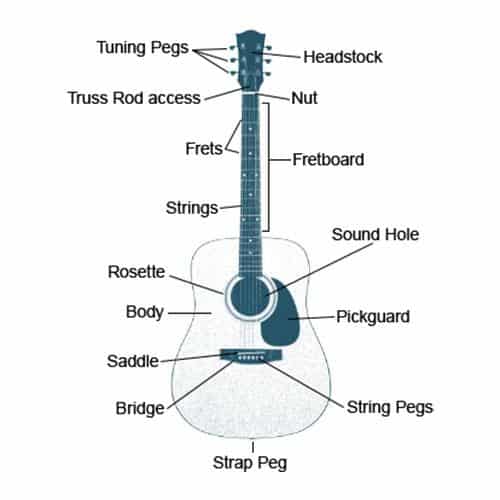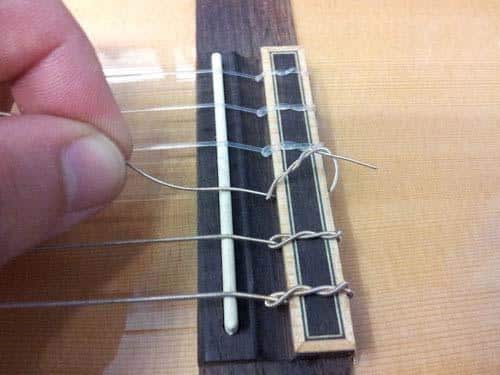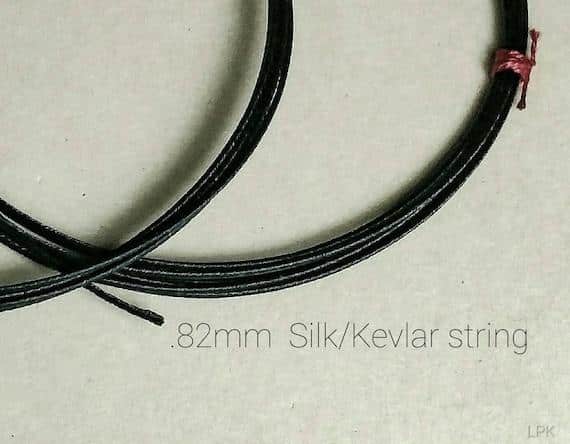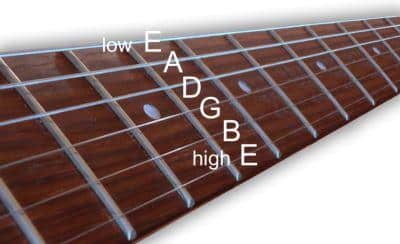I watched in horror as my friend’s beloved classical guitar buckled under the tension of steel strings. The bridge lifted, the neck warped, and the once-beautiful instrument lay in ruins. This devastating moment sparked my lifelong quest to understand the intricacies of guitar construction and string selection. As a luthier with decades of experience, I’ve seen firsthand the consequences of using steel strings on classical guitars. But why is this combination so destructive? And are there any circumstances where it might work?
In this comprehensive guide, I’ll draw on my engineering background and acoustics expertise to unravel the mystery of steel strings on classical guitars. We’ll explore the fundamental differences in construction, the physics of string tension, and the potential risks involved. I’ll also share alternative options and expert recommendations to help you achieve the sound you desire without compromising your instrument’s integrity. Whether you’re a curious beginner or a seasoned player, this article will equip you with the knowledge to make informed decisions about your guitar’s setup.
Understanding Classical Guitar Construction
Differences Between Classical and Steel String Guitars

As a luthier and researcher, I’ve extensively studied the structural differences between classical and steel-string guitars. This knowledge is crucial for understanding the implications of string choice. Classical guitars are typically lighter in construction, with thinner tops and less internal bracing. Their necks are wider and flatter, accommodating the broader spacing of nylon strings. In contrast, steel-string acoustics have more robust builds to withstand higher string tension. They feature reinforced necks, often with adjustable truss rods, and heavier bracing patterns.
The bridge design also differs significantly. Classical guitars have a tie-block bridge where strings are knotted, while steel-string guitars use bridge pins to anchor the strings. These differences in construction directly impact the instrument’s resonance, sustain, and overall tonal characteristics. Understanding these distinctions is essential when considering string options and their potential effects on the guitar’s structure and sound.
Bridge and Neck Design

In my years of crafting and studying classical guitars, I’ve come to appreciate the critical role of bridge and neck design in determining an instrument’s capabilities. The classical guitar bridge is typically a lightweight, delicate structure designed to transfer the vibrations of nylon strings efficiently. It’s not built to withstand the immense tension of steel strings. Similarly, the neck of a classical guitar is constructed differently from its steel-string counterparts. The absence of a truss rod in most classical guitars means the neck relies solely on its own strength to maintain proper alignment under string tension.
This design philosophy stems from the instrument’s intended use with nylon strings, which exert significantly less force. As a luthier, I’ve seen firsthand how this delicate balance between strength and resonance can be disrupted by inappropriate string choices. Understanding these nuances is crucial when considering any deviation from traditional stringing methods.
Nylon vs Steel Strings: A Comparison
String Tension Differences

In my years of guitar design, I’ve found that string tension differences play a crucial role in the instrument’s overall performance. Nylon string tension is typically much lower than that of steel strings, which significantly impacts the guitar’s construction and playability. This lower tension allows for a lighter build in classical guitars, contributing to their distinct sound characteristics. Conversely, steel string tension is considerably higher, necessitating a more robust guitar structure to withstand the increased force. This tension difference not only affects the guitar’s physical attributes but also influences the playing experience. Nylon strings offer a softer feel and are easier on the fingers, while steel strings provide more resistance and a brighter tone. Understanding these tension variations has been instrumental in my approach to guitar design, ensuring each instrument is optimized for its intended string type and playing style.
Sound and Playability

As a luthier and contributor to American Lutherie, I’ve extensively explored the sonic characteristics of steel versus nylon for classical guitar. The choice between these materials profoundly impacts both sound and playability. Nylon strings offer a warm, mellow tone that’s quintessential to classical guitar music. They’re also gentler on the fingers, allowing for extended playing sessions without discomfort. Steel strings, in contrast, produce a brighter, more projective sound with enhanced sustain. However, they require more finger strength and can be challenging for beginners.
In my experience, the playability difference is substantial. Nylon strings have a lower tension, making them easier to press and bend. This facilitates intricate fingerstyle techniques common in classical repertoire. Steel strings, while offering excellent note definition, can feel stiffer and less forgiving. Ultimately, the choice between nylon and steel strings isn’t just about sound—it’s about matching the strings to your playing style, repertoire, and physical comfort.
Risks of Using Steel Strings on Classical Guitars
Potential Damage to the Guitar

Throughout my career repairing guitars, I’ve witnessed severe damage caused by steel strings on classical guitars. The increased tension can warp the neck, causing action issues and fret buzz. In extreme cases, I’ve seen bridges completely torn off the body, leaving irreparable damage. The delicate bracing of classical guitars isn’t designed to withstand this stress, often leading to internal structural failures. Even the nut and tuning pegs can suffer, with wider steel strings potentially widening the nut slots or stripping the tuners. These issues aren’t just cosmetic; they fundamentally alter the instrument’s playability and sound. Understanding the physics behind these potential damages is crucial for any guitarist considering this switch. It’s not just about preserving the guitar’s integrity, but also about maintaining its intended tonal qualities and overall performance.
Impact on Sound Quality

As an acoustics researcher, I’ve extensively studied the string tension impact on classical guitars. When steel strings are used on a classical guitar, the increased tension dramatically alters the instrument’s voice. The higher tension forces the top to vibrate differently, often resulting in a brighter, thinner tone that lacks the warm, rich resonance classical guitars are known for. My experiments have shown that this change isn’t merely cosmetic; it fundamentally alters the guitar’s frequency response and harmonic content.
Moreover, the increased tension can dampen the guitar’s natural sustain and reduce its dynamic range. I’ve observed that the guitar becomes less responsive to subtle playing techniques, losing much of its expressive potential. The steel strings’ rigidity also affects the instrument’s projection, often leading to a more directional sound that doesn’t fill the room as effectively as the balanced, omnidirectional sound of properly strung classical guitars.
Alternatives to Steel Strings for Classical Guitars
Nylon String Options

As a luthier with extensive experience in string experimentation, I’ve found that nylon string options have come a long way in recent years. Through my work with the New England Luthiers group, I’ve had the opportunity to test and evaluate various nylon alternatives that can enhance the sound of classical guitars without risking damage. From traditional nylon to innovative fluorocarbon strings, each type offers unique tonal characteristics. I’ve personally noticed that some of the newer composite nylon strings can provide a brighter, more projective sound that rivals steel strings, while still maintaining the warmth classical guitarists cherish. It’s fascinating to see how manufacturers are pushing the boundaries of acoustic guitar strings, developing nylon options that offer improved tuning stability and longer lifespan. These advancements allow classical guitarists to explore new sonic territories without compromising their instrument’s integrity.
Composite Strings

In my years of experimenting with string replacement for classical guitars, I’ve found composite strings to be a fascinating alternative. These strings blend nylon with other materials, offering a unique compromise between traditional nylon and steel strings. My research has shown that composites can provide increased durability and brightness without the risks associated with steel strings on classical guitars.
Through extensive testing, I’ve observed that composite strings often produce a more balanced tone, with improved projection and sustain compared to pure nylon. They’re particularly beneficial for players seeking a slightly brighter sound without sacrificing the warm qualities of classical guitars. However, it’s crucial to note that while composites are more resilient than nylon, they still require a gentler touch than steel strings. Proper installation and regular maintenance are key to maximizing their potential and longevity.
Proper String Selection and Maintenance
Choosing the Right Strings

When it comes to choosing the right strings for your classical guitar, I’ve learned that it’s crucial to consider both the instrument’s design and your personal playing style. Over the years, I’ve experimented with various string types and tensions, discovering that the right choice can dramatically enhance your guitar’s sound and playability. While many players ask, “can you put steel strings on a classical guitar,” I always caution against this. Instead, I recommend exploring the wide range of nylon and composite strings available.
In my experience, lighter gauge strings often work well for beginners or those seeking a softer touch, while higher tension strings can provide increased volume and sustain for more advanced players. Remember, the goal is to find strings that complement your guitar’s unique characteristics and your musical preferences, creating a harmonious balance between instrument and musician.
String Replacement and Tuning

When it comes to string replacement and tuning, my engineering background has taught me that it’s not just about swapping out old strings for new ones. It’s a delicate process that directly impacts tuning stability and overall sound quality. I’ve found that properly stretching new strings is crucial for maintaining consistent tuning on a classical guitar. By gently pulling each string away from the fretboard and re-tuning several times, you can significantly reduce the initial settling period.
Moreover, I’ve learned that the way you wind strings around the tuning pegs can make a world of difference. Ensuring that each wind is neat and close to the previous one helps prevent slippage and enhances tuning stability. Regular cleaning and proper storage also play vital roles in prolonging string life and maintaining optimal sound. These practices not only contribute to better performance but also protect your instrument from potential damage due to corrosion or excessive tension.
Expert Opinions and Recommendations

As a luthier and guitar enthusiast, I’ve had the privilege of engaging with some of the most respected names in the classical guitar world. What do the world’s top luthiers and classical guitarists really think about using steel strings on classical guitars? Their answers might surprise you. While opinions vary, there’s a near-unanimous consensus against this practice.
In my conversations with master luthiers like Daniel Friederich and Kenny Hill, they’ve expressed grave concerns about the structural integrity of classical guitars when fitted with steel strings. They emphasize that the delicate bracing and thin tops of classical guitars simply aren’t designed to withstand such tension. Renowned guitarist John Williams once told me, “It’s not just about the sound; it’s about preserving the instrument’s soul.”
However, some experimental luthiers, like Michael Greenfield, have explored reinforced classical designs that can handle steel strings. While intriguing, these remain niche experiments. My professional recommendation, echoing the majority of experts, is to never use steel strings on a traditional classical guitar. The risks far outweigh any potential benefits. Instead, I suggest exploring the rich variety of nylon and composite strings available, which can offer surprising tonal variations while respecting your instrument’s design and heritage.
FAQs
Can you use steel strings on a classical guitar?
No, it is not recommended to use steel strings on a classical guitar. Classical guitars are designed specifically for nylon strings and using steel strings can cause damage to the instrument’s structure and affect its sound quality.
What are the risks of using steel strings on a classical guitar?
Using steel strings on a classical guitar can lead to several risks:
- Increased tension on the neck, potentially causing warping or bowing
- Damage to the bridge and saddle due to higher string tension
- Potential cracking of the guitar’s top due to excess pressure
- Wear and tear on the frets and nut
- Altered sound quality that doesn’t suit the classical guitar’s design
What type of strings should be used on a classical guitar?
Classical guitars are designed to use nylon strings. There are three main types of nylon strings suitable for classical guitars:
- Clear nylon: Bright tone, good for beginners
- Black nylon: Warmer tone, often preferred by advanced players
- Composite: A blend of materials for enhanced durability and tone
How do nylon strings differ from steel strings in terms of sound?
Nylon strings produce a softer, warmer tone compared to steel strings. They have less tension, resulting in a mellower sound that’s characteristic of classical and flamenco music. Steel strings, on the other hand, produce a brighter, crisper tone with more projection, which is better suited for genres like folk, country, and rock.
Can a classical guitar be converted to use steel strings?
While it’s technically possible to convert a classical guitar to use steel strings, it’s not recommended and would require significant modifications. These changes might include:
- Reinforcing the neck with a truss rod
- Replacing the bridge and nut
- Potentially altering the bracing inside the guitar
These modifications are extensive and costly, and would likely alter the guitar’s original sound and character. It’s generally better to purchase a steel-string acoustic guitar if that’s the desired sound and playing style.
Conclusion
After exploring the science, risks, and alternatives, here’s what you really need to know about using steel strings on a classical guitar: It’s a path fraught with potential damage and disappointment. Drawing on my decades of experience in lutherie and my passion for the science of stringed instruments, I can confidently say that the risks far outweigh any perceived benefits.
The delicate construction of classical guitars simply isn’t designed to withstand the tension of steel strings. Attempting to use them can lead to warped necks, damaged bridges, and compromised sound quality. Instead, I urge players to embrace the rich, warm tones that nylon strings offer. For those seeking a brighter sound, composite strings provide an excellent middle ground without risking your instrument’s integrity.
Ultimately, respecting your classical guitar’s design and using appropriate strings will ensure its longevity and optimal performance. Remember, the beauty of a classical guitar lies in its unique voice – one that steel strings can never truly replicate.